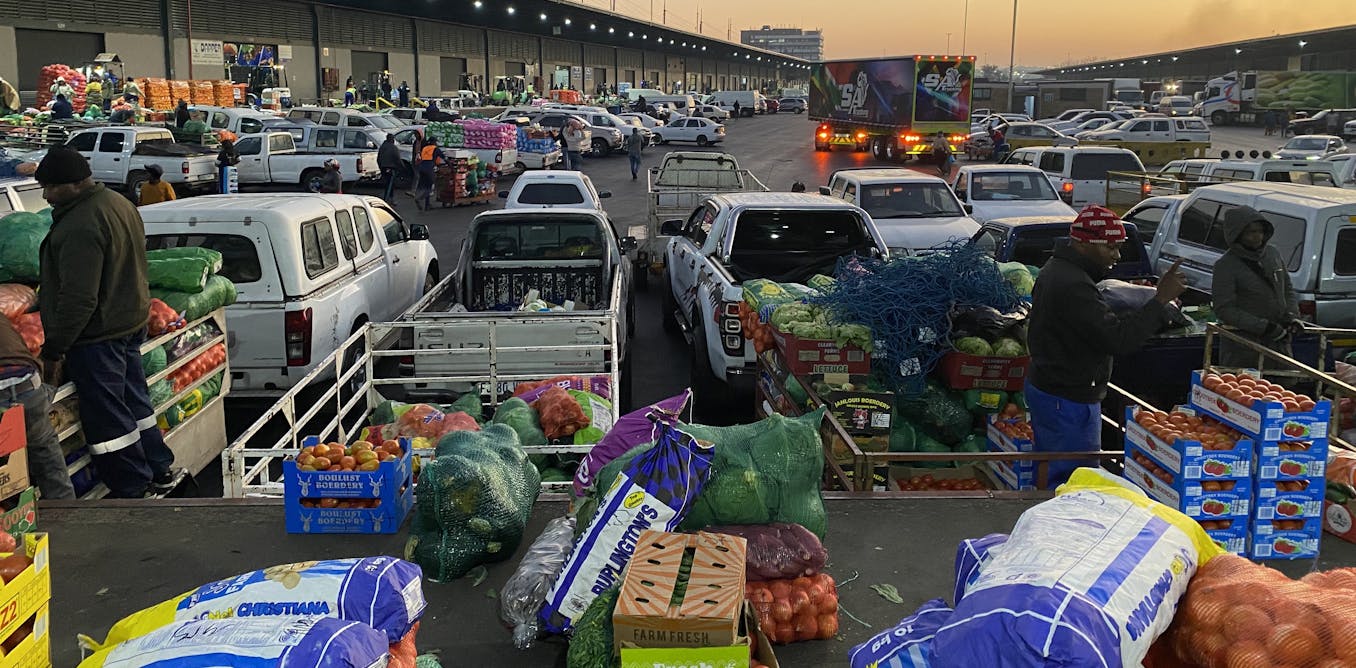China’s Dark Factories: A Glimpse into Hyper-Automation in the EV Industry
In the ever-evolving landscape of the global automotive industry, China is redefining production standards with its high-tech "dark factories." Operating around the clock, these facilities are emblematic of a future where automation takes precedence over human labor, threatening to shift the balance of power in the industry. The Wall Street Journal’s latest video, "China’s Dark Factories: So Automated, They Don’t Need Lights," provides an in-depth look at this phenomenon, especially through the lens of Zeekr, a luxury electric vehicle (EV) manufacturer.
A New Era of Production
As Ford’s CEO warns, the rapid advancement of China’s EV industry poses an existential threat to global automakers. These dark factories rely heavily on robots and automated systems, significantly reducing human interaction and labor costs. This level of automation not only enhances efficiency but also raises critical questions about the future workforce in manufacturing.
In a stark contrast to traditional factories, which buzz with human activity, Zeekr’s facility is characterized by its dimly lit environment, illuminated only by the glow of advanced machinery. Here, the focus is on maximizing productivity while minimizing overhead costs—a model that could soon set the standard for manufacturers worldwide.
The Challenges of Overproduction
Amidst this surge in production capacity, China grapples with the dual challenge of overproduction and the implications of ongoing trade tensions, notably with the United States. As the video highlights, the question looms large: who will buy all these vehicles? The Chinese market’s insatiable demand for new energy vehicles has helped accelerate production, but as competition grows, maintaining this momentum will be crucial.
The Automation Advantage
Inside Zeekr, the video reveals the cutting-edge technologies that enable such high levels of automation. From the assembly line to quality control, every aspect of the manufacturing process is streamlined through sophisticated algorithms and robotics. This hyper-automation not only improves manufacturing speed but also allows for rapid adjustments to consumer demands—a luxury that traditional automakers may struggle to replicate.
The U.S. Response
As the U.S. faces its own challenges in the EV sector, insiders assert that American automakers are playing catch-up. Traditional manufacturing methods, which are more reliant on human labor, are proving less competitive in prices and efficiency. The stakes are high, and the implications of failing to adapt could be detrimental to the legacy automakers.
A Shifting Economic Landscape
The video further delves into broader economic challenges facing China, including rising labor costs and potential market saturation. These issues could complicate the trajectory of the EV market, making it imperative for companies to innovate continually.
Conclusion
"China’s Dark Factories: So Automated, They Don’t Need Lights" offers a critical perspective on the future of manufacturing and the automotive industry at large. As the balance shifts toward hyper-automation, the world watches closely to see how these advancements will shape competition, labor, and consumer behavior in the years to come. The Chinese model presents a compelling but complex narrative, one that may hold lessons for global manufacturers striving to remain relevant in an increasingly automated world.
Watch the video by The Wall Street Journal
Video “China’s Dark Factories: So Automated, They Don't Need Lights | WSJ” was uploaded on 07/18/2025 to Youtube Channel The Wall Street Journal



































0:38 "Who's going to buy all these new cars?"
Ahhh… the other 7.89 billion of us 😅
Forced robotic labour. Poor robots living in an authoritarian state😢
Lets talk about the elephant in the room. China’s electricity cost is about half the USA. $.08/kw China. $.15/kw USA. They use over 7 times the amount of coal than the USA to make electricity. Their EVs are cheap but not green.
In Chinese it should translate to “lights off factory” but I guess you have to give people the impression of the country
China is awesome
The video is very negative about chinese progress
S. Korea has been doing dark factories for a while
vocal fry
haters in these comments COPING so hard 😂
No worries, trump's tariffs and broken energy policies will encourage US automakers to raise prices and eventually collapse the industry in the US.
Billion people yet China needs robots….🤔
Now their robots can buy the cars with their wages; that is what you get when capitalism is done by moron commies.
Fun fact my next car in 2026 or 27 will probably be zeekr
Then why is everyone so hellbound in increasing the population. Jobs are dwindling, how will the masses per for everything
Warning the Chinese bots are heavy on the comment section.
Over capacity. Year right!
This isn't sustainable. You need people with jobs to have an economy. Everything can't be done by robots and AI
This reminds me of the film minority report, when tom cruise finds himself in an automated car factory, the future is here
This is what Tesla wishes it could be
We are cooked
So evil, they not only NOT paying the robots minimum fair living wages, but also working the robots to 24-7. Where is the robot's right? Robots should form an ARU, Auto Robots Union to demand their rights. .
And how Swiss luxury wristwatches and their Chinese replicas are made…
U.S 10 years later🗣️: China does not give their robots a break.
After those ridiculous UFO articles the journal put out, their credibility and integrity has been thrown into some serious doubt.
I'd advise everyone to unsubscribe.
And now you understand the tariff war. Trump wants these robotic factories in the U.S.
Trump: Keep China great and America in the 20th century.
The CPP is hiding their forced labor in the dark. I thought that would be the headline.
look at the comment section makes me smile a bit, history of the truth always win no matter how hard you want to spin it with lie
I was holding my breath for the "but at what cost" until my face turn blue…
The "dark factory" concept predates the common use of machine vision in robotics. If you turned off all light in a modern factory, the machines couldn't see what they're doing any better than humans could.
Well, most other car companies (outside of China) also manufacture this way? Chassis assembly and welding are almost all automated now. I’ve literally seen it first hand. What comes after is the part that requires lines of man-work which you’ve shown as if it was the easy part. This is textbook sensationalism reliant on people’s lack of knowledge about this topic.
"who's going to buy all these cars"
News flash, the rest of the world is already buying Chinese cars as we speak …
China adds export controls to protect EV battery technology: https://on.wsj.com/4lUgkQ4